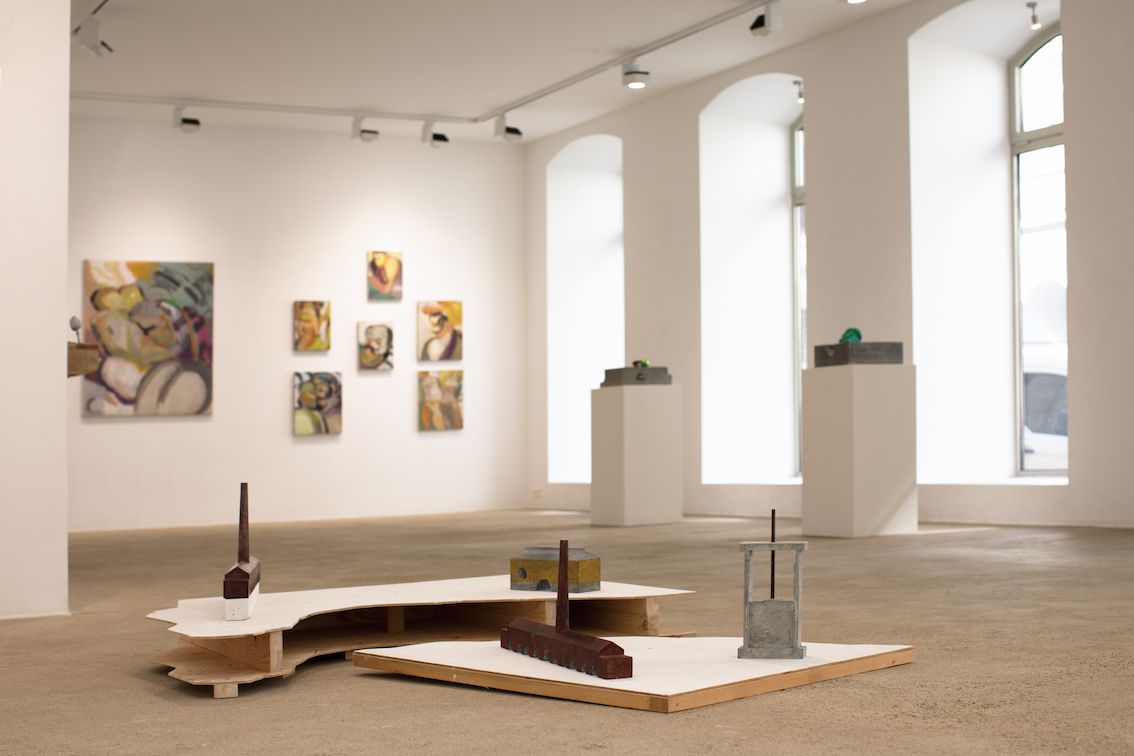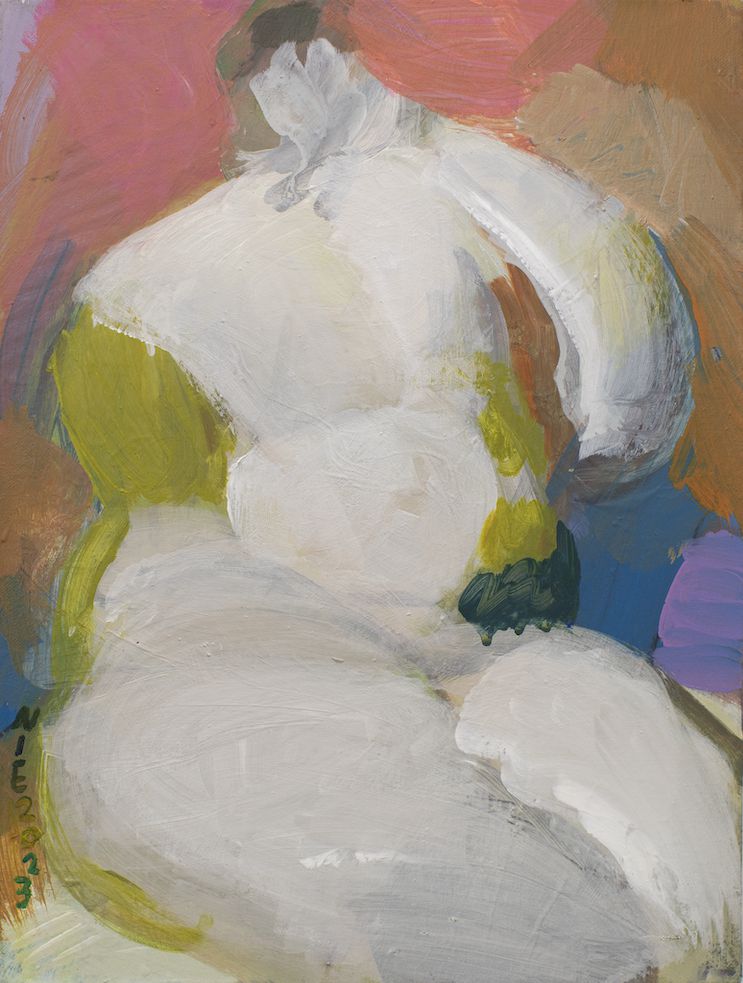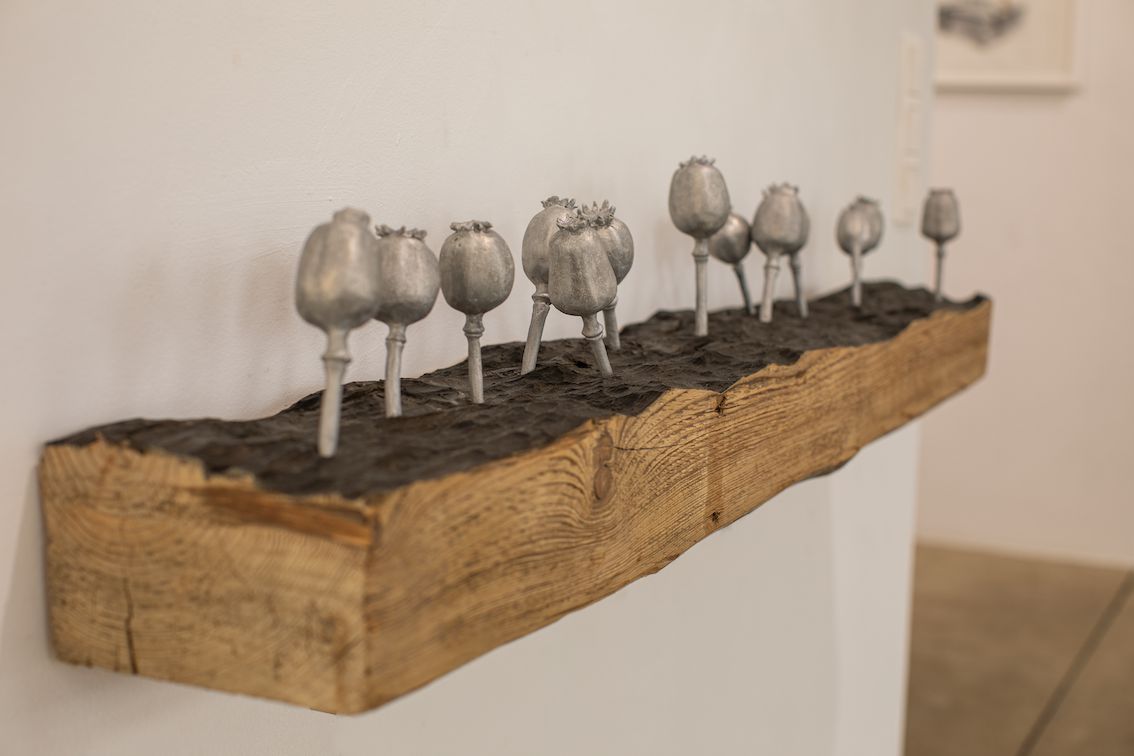Gravity’s Rainbow: Nie Shiwei and Wang Lei
By BRIAN HAMAN

Installation view of "Gravity’s Rainbow: Nie Shiwei and Wang Lei" at Loft 8 Galerie, Vienna, 2024. Courtesy Blue Mountain Contemporary Art, Luxembourg.
Gravity’s Rainbow: Nie Shiwei and Wang Lei
Loft 8 Galerie
Vienna
Mar 8–23, 2024
With spring slowly emerging from its
winter slumber, the streets of Vienna were awash in color, and so too was
Vienna’s Loft 8 Galerie, which presented “Gravity’s Rainbow: Nie Shiwei and Wang Lei.” Curated by Alexandra Grimmer, the
exhibition of oil paintings, graphic works, ceramics, and sculptural objects
and installations paired two Chinese artists—both of whom were born in the 1980s and based in Beijing. It also marked the fifth exhibition organized by Blue
Mountain Contemporary Art (BMCA) for Loft 8. A private collection of
contemporary Chinese art based in Vienna, BMCA was established in 2013, having
moved its headquarters from Beijing to Europe. In addition to exhibitions,
their work focuses on artist residencies and artistic collaborations between
Chinese and European artists.
Born in Shandong, Nie Shiwei (聂世伟) primarily uses acrylic on canvas, and the works on display suggest the artist’s commitment to
figurative painting, gestural brushwork, and a palette of earthy browns and
yellows punctuated by vibrant pastels. Take, for instance, two works from 2023:
The Fat Woman—which depicts a woman with a voluptuous figure, ghostly
white skin, twisting torso, and downward gaze—appears surrounded by a penumbra
of bold color (recalling the work of Alexej von Jawlensky), and The Way Travellers
Are Viewed, an
equally ghostly white figure viewed from behind, its arched back poised as if ready
to sprint beyond the viewer’s gaze. If Nie Shiwei finds his aesthetic starting
point in Italian Baroque painting (evidenced here by distorted bodily
compositions that convey a sense of movement through a certain gestural
suggestiveness) his use of complementary or contrasting primary and secondary
colors to elicit emotional reactions is characteristically (neo)expressionist.

NIE SHIWEI, The Fat Woman, 2023, acrylic on canvas, 40 × 30 cm. Courtesy the artist and Blue Mountain Contemporary Art, Luxembourg.

NIE SHIWEI, The Way Travellers Are Viewed, 2023, acrylic on canvas, 50 × 40 cm. Courtesy the artist and Blue Mountain Contemporary Art, Luxembourg.
Originally from Wuwei, Anhui
Province, Wang Lei (王垒) (not to be confused
with Wang Lei 王雷) studied sculpture at
Hangzhou’s China Academy of Art, graduating in 2016. His installations on
display at Loft 8 incorporated colorful accents and a range of materials, from
concrete, stainless steel, resin, and sorel cement to wood, aluminum, and
rebar. In some cases, he begins his process with preliminary watercolor
drawings on paper, four of which were included in the show. Immediately within
the visitor’s field of vision upon entering the gallery was The First and Second Factories (2023), in which a repurposed wooden
pallet—cut into two curvilinear pieces—provided a manufactured landscape atop
which sat two miniature replicas of brick factories, with their singular smoke
stacks, along with a simple dam and a rural Chinese house. Just as bricks were
an essential link between China’s ancient past and its Mao-era modernization
efforts during the second-half of the 20th century, the two factories serve as
physical and figural constructions of the artist’s childhood memories—a
temporal link to the vanishing past of his grandparents’ kilns.

WANG LEI, Secret Farm, 2024, wood and cast aluminum, 113 × 18 × 25 cm. Courtesy the artist and Blue Mountain Contemporary Art, Luxembourg.
In other works, such as Secret Farm (2024), Wang Lei draws on Leonardo da Vinci’s The Last Supper (1495–98), creating a wooden beam along which twelve cast aluminum poppies flank a central poppy on both sides. (Although China strictly prohibits their cultivation, poppies occasionally make their way into Chinese cuisine.) In Reshaping Landscapes No. 7 (2023), a cracked aquamarine Buddha’s head rests on a fissured concrete block with a deep channel that splits into two (the off-kilter head recalling the work of Zhang Huan), while Reshaping Landscape No. 3 (2022) displays a similar concrete block—here bisected in two by a polished green ball in the groove, with another on top, and a swallowed Chinese pagoda (its steeple and base barely protruding beyond the material). What are we to make of such Surrealistic scenes that allude to Western art and architecture, as well as contemporary Chinese politics, and its use of industrial materials?
Perhaps one path out of the
labyrinth of interpretive possibilities can be found in the exhibition title,
“Gravity’s Rainbow,” a reference to Thomas Pynchon’s eponymous 1973 novel that
explores, among other things, the emotional resonances that (re)shape our
lives. For Nie Shiwei, the interplay of figurative art and color hints at
deeper layers of meaning, while Wang Lei’s sculptures seem to search for
memories that lurk beneath the surface of consciousness. Or as Pynchon wrote in
his novel, “There’s some kind of blind passage of energy, through us, some way
of making connections we can’t understand.”
Brian Haman is editor-in-chief of The Shanghai Literary Review and
a lecturer at the University of Vienna.







